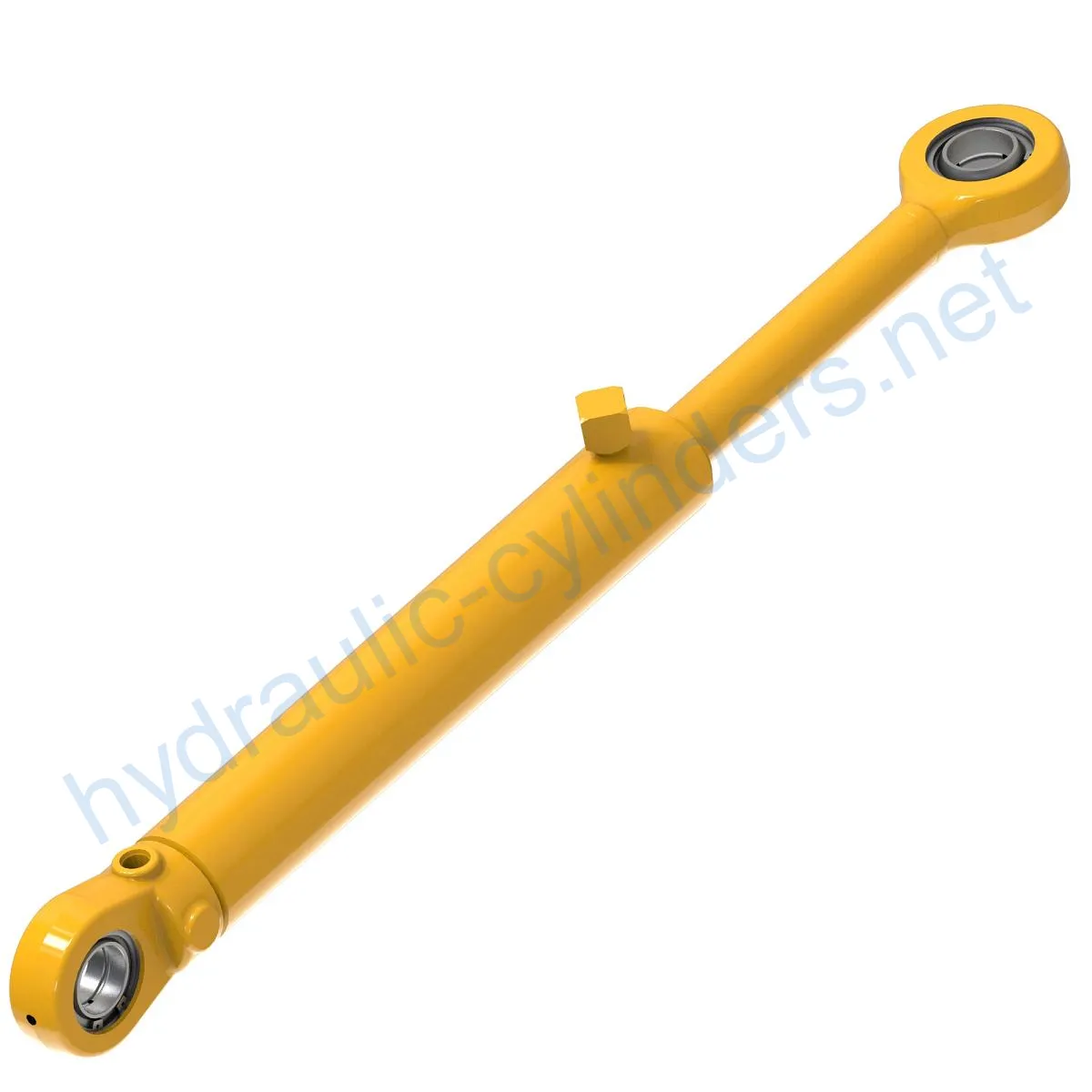Replacement Of AHC17023 Blade Angle Hydraulic Cylinder
As one of the hydraulic cylinders manufacturers, suppliers, and exporters of mechanical products, We offer hydraulic cylinders and many other products.
Please get in touch with us for details.
Mail:sales@hydraulic-cylinders.net
Manufacturer supplier exporter of hydraulic cylinders.
Replacement Of AHC17023 Blade Angle Hydraulic Cylinder
Product Definition
The Replacement Of AHC17023 Blade Angle Hydraulic Cylinder is a hydraulic component used in various models of 450J, 450K, 550J, 550K, 650J, and 650K equipment. It is responsible for adjusting the blade angle and ensuring smooth operation.
Specifications and Models
Weight: 46.47 lb
Height: 3.3 in
Width: 5.3 in
Length: 35 in
Models: 450J, 450K, 550J, 550K, 650J, 650K
Product Features
- Improved Equipment Performance: Replacing damaged or worn hydraulic cylinders can restore the equipment’s normal operating capabilities, ensuring optimal performance in various applications.
- Enhanced Safety: Regularly replacing hydraulic cylinders reduces safety hazards caused by cylinder failures, ensuring the safety of operators and equipment.
- Overload Protection: New cylinder designs often incorporate better overload protection mechanisms, enhancing overall safety.
- Quick Installation: Modern hydraulic cylinders are designed for easy installation and replacement, minimizing downtime.
- Standardized Components: Many hydraulic cylinders are standardized products, making it easier to obtain replacement parts in the market.
Applications
- Excavators: Hydraulic cylinders in excavator arms or buckets may get damaged due to prolonged use or overload, requiring replacement for normal operation.
- Cranes: Crane boom hydraulic cylinders are prone to wear during frequent lifting and lowering processes, necessitating regular replacement for safety.
- Tractors: Front-end loader hydraulic cylinders in tractors may experience leaks or performance degradation during constant lifting and tilting operations, requiring replacement.
- Harvesters: Hydraulic cylinders in harvesting machinery endure high pressure during the harvesting process, and timely replacement ensures efficient work performance.
- Automated Production Lines: Hydraulic cylinders are used to control robotic arms and other automated equipment. Cylinder failures can significantly impact production efficiency and should be promptly replaced.
- Die Casting Machines: Hydraulic cylinders in die casting machines may experience performance degradation in high-pressure and high-temperature environments. Regular replacement ensures product quality.
- Mining Equipment: Hydraulic cylinders are used for lifting and moving heavy loads in mining equipment. Due to harsh working conditions, regular inspection and replacement are necessary to avoid equipment failure.
- Bulldozers: Wear of hydraulic cylinders on bulldozer blades can lead to decreased pushing capacity, necessitating timely replacement to maintain operational efficiency.
Maintenance Tasks
Regular maintenance tasks for the hydraulic cylinder include:
- Periodic inspections
- Proper lubrication
- Seal replacement
- Calibration checks
It is important to provide proper guidance for cylinder alignment during installation, recommend the use of appropriate installation brackets for cylinder stability, and suggest inspection, repair, and replacement procedures. Additionally, offering replacement parts and rebuilding services can extend the lifespan of the hydraulic cylinder.
Safety Considerations and Environmental Factors
When using hydraulic cylinders, it is crucial to follow safety measures. Proper installation, lubrication, and adjustment are essential. Providing instructions for correctly aligning the cylinder during installation and recommending suitable safety precautions is important. Furthermore, discussing the importance of safety measures when working with hydraulic cylinders in various environments is necessary.
Troubleshooting and Common Issues
Common issues and troubleshooting tips related to hydraulic cylinders:
- Leakage: Check for damaged seals or connections. Replace faulty components.
- Insufficient Pressure: Inspect the hydraulic system for blockages or malfunctions. Adjust pressure settings if necessary.
- Abnormal Noises: Check for loose or worn parts. Lubricate components or replace damaged ones.
- Inconsistent Operation: Inspect for misalignment or damaged components. Realign or replace as needed.
- Slow Cylinder Movement: Ensure proper lubrication and check for obstructions. Clean or replace as required.
Providing troubleshooting tips and solutions helps readers effectively diagnose and resolve problems. Suggesting preventive measures can reduce potential issues.

Product Design Considerations and Selection Criteria
When designing and selecting hydraulic cylinders, several factors should be considered:
- Load-Bearing Capacity: The cylinder must be capable of handling the required loads without failure.
- Sealing and Durability: Proper sealing materials, such as polyurethane or nitrile rubber, should be chosen for wear resistance. The cylinder body and threaded ends should undergo meticulous treatment to enhance wear resistance.
- Safety and Maintenance: Design elements that improve safety and simplify maintenance, such as standardized components and easy disassembly/reassembly, should be incorporated.
Sealing and Lubrication
For effective sealing and lubrication, various sealing components like piston seals and rod seals are utilized. These components are made of wear-resistant materials such as polyurethane or nitrile rubber. Additionally, the cylinder body and threaded ends are meticulously processed to improve wear resistance. Regular lubrication with appropriate hydraulic oil is necessary.
Regular Inspection and Preventive Maintenance
Regular inspection and preventive maintenance tasks include:
- Periodic checks for leaks, wear, and misalignment
- Proper lubrication of moving parts
- Seal replacement when necessary
- Calibration checks to ensure accurate performance
Providing correct installation guidelines and emphasizing the importance of regular inspection, lubrication, and adjustment contributes to extended hydraulic cylinder lifespan. Offering replacement parts and rebuild services is also beneficial to customers.
Installation Guide
Proper installation of hydraulic cylinders is crucial for optimal performance
Take a Tour of Our VR Factory:
Take a tour of our VR factory with the following
Hydraulic Cylinder Application:


